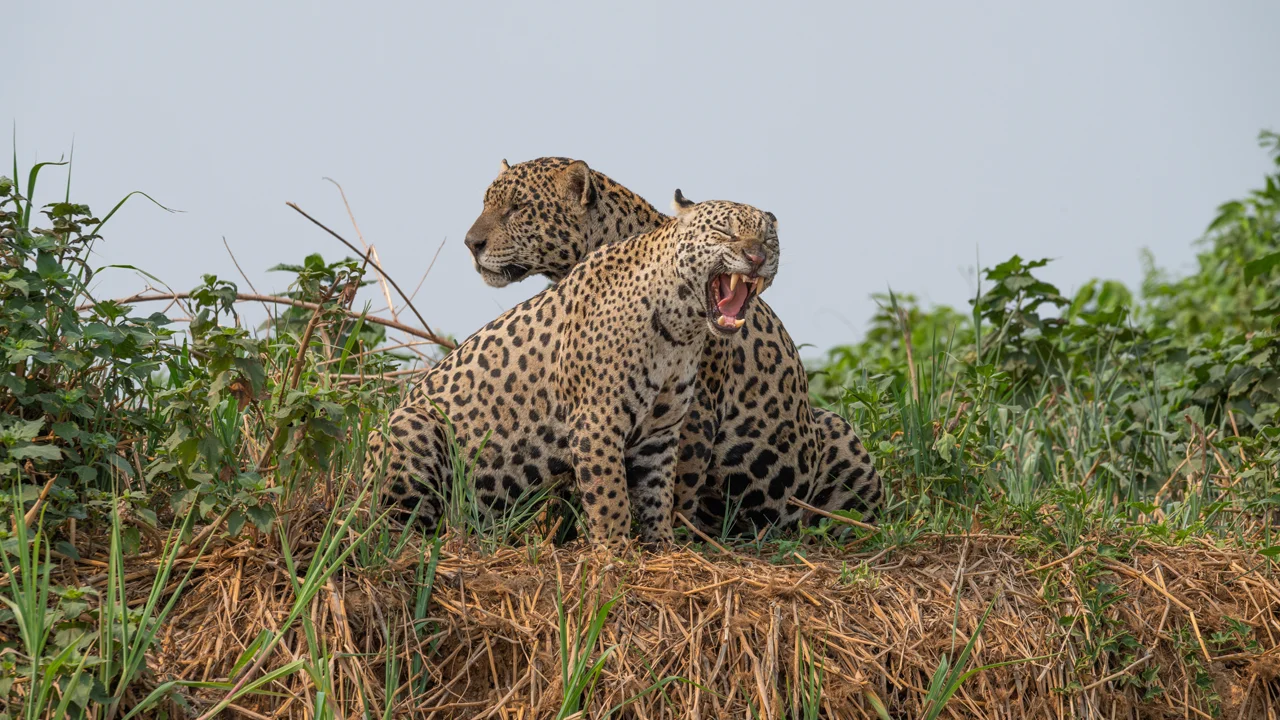Jaguar
The Largest Cat in the Americas
Meet the Jaguar
2021
Marcela
2024
Marcela
2021
Rio
2024
Rio
Jaguar
The jaguar is the largest feline in the Americas and a symbol of strength and beauty. Learn more about its habits, habitat and the conservation efforts that help protect this endangered species.
Biodiversity Conservation and Ecotourism

Jaguar Observation
Ecotourism is a practice that aims to promote tourism in natural areas, offering educational and leisure experiences while contributing to environmental conservation. When well implemented, it can generate financial resources for the protection of ecosystems and endangered species, in addition to raising awareness among tourists about the importance of biodiversity (Honey, 2008; Brandon, 1996). However, it is essential that the activity is carried out in a sustainable manner, to avoid negative impacts on natural habitats.
In the context of the Pantanal, one of the largest wetlands in the world, ecotourism has proven to be a valuable tool for biodiversity conservation. The Pantanal is home to a rich fauna, including the jaguar (Panthera jaguar), an emblematic species that has attracted tourists interested in observing them in their natural habitat. The practice of observing jaguars, particularly in the Porto Jofre region, has generated significant revenue, with estimates that this activity generates around US$1.2 million per year (O'Riordan et al., 2017).
This type of ecotourism not only brings economic benefits, but also strengthens the conservation of the species and other local animals. However, it is crucial that observation activities follow strict protocols to avoid disturbing the natural behaviors of the felines and to ensure that tourism does not cause damage to ecosystems. Monitoring and environmental education programs have been essential to balance wildlife observation with conservation (Campos et al., 2013).
Global Distribution, Challenges and Conservation in Brazil


How to Identify a Jaguar?
What to watch out for?
- Rosettes on the body – Shape, size and arrangement of the spots are unique.
- Scars and peculiarities – Cuts in the ears or variations in the coat help with identification.
Monitored Jaguars
Meet some by name
2012
Patricia
Patricia
Born 2012
Jaju and Fearful (2016)
Chula (2019)
Krishna and Kasimir (2021)
Nauru and Yanomami (2023)
Makala (2024)
2016
Medrosa
Medrosa
Born 2016
Rio and Marcela (2021)
Aimee (2023)
Pantanal (2024)
2021
Marcela
Marcela
Born 2021
2022
Manath
Manath
Born 2022
Unknown
Ousado
Ousado
Birth Unknown
2021
Rio
Rio
Born 2021

Discover the Best of the Pantanal
Plan your adventure with us and explore one of the most incredible biomes in the world.


